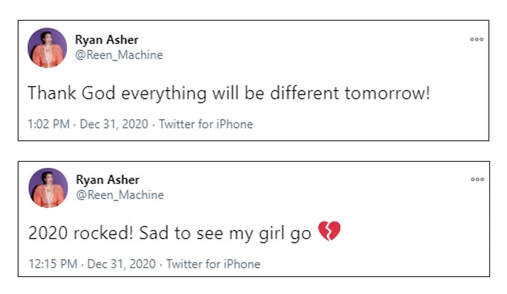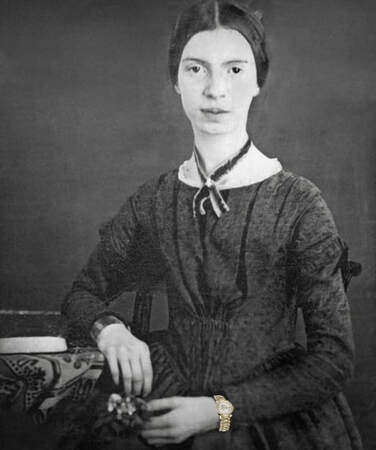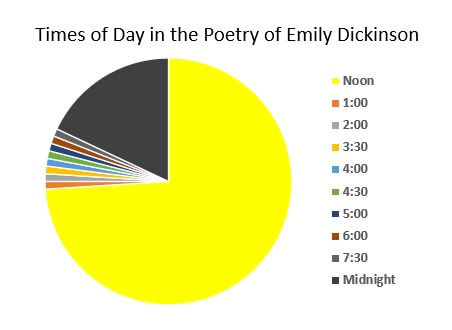Anyway, tonight at midnight, we shall all hold a coin, shout "Happy New Year," and sing "Auld Lang Syne." Tomorrow, we'll consume pork and black eyed peas, and everything will be different.
Well, maybe not.
Remember when news surfaced that an ancient Mayan calendar predicted the end of the world in 2012? Some now think there was a discrepancy in the calendar, and the Mayan's got the number wrong. Did they really mean 2021?
I suppose we'll know more at midnight, right?
With the few hours left in 2020, and the onset of 2021 at midnight, I wondered what times of day might be included in the poems of Emily Dickinson. The information is below.
Below: Emily Dickinson in her gold Rolex watch, a gift from her parents.
Emily Dickinson used the term “o’clock” with no specified time in the poem “We pay to heaven.” In that poem, she said, “Relate – when Neighbors die -- / At what o’clock to Heaven – they fled.”
In other poems, she did mention the following specific times, once each: one o’clock, two o’clock, half-past three, four o’clock, half-past four, five o’clock, six o’clock and half-past seven.
Below are the specific times and the poems they appear in:
| TIME: | POEM: | LINE: |
| 1:00 | The Clock strikes one that just struck two | The Clock strikes one that just struck two |
| 2:00 | The Clock strikes one that just struck two | The Clock strikes one that just struck two |
| 3:30 | At Half-past Three, a single bird | At Half-past Three, a single bird |
| 4:00 | The birds begun at four o’clock | The birds begun at four o’clock |
| 4:30 | At Half-past Three, a single bird | At Half past Four, experiment |
| 5:00 | The Day came slow – till Five o’clock | The Day came slow – till Five o’clock |
| 6:00 | I tie my Hat – I crease my Shawl – | The time ’twill be till six o’clock – |
| 7:30 | At Half-past Three, a single bird | At Half-past seven, element |



 RSS Feed
RSS Feed
